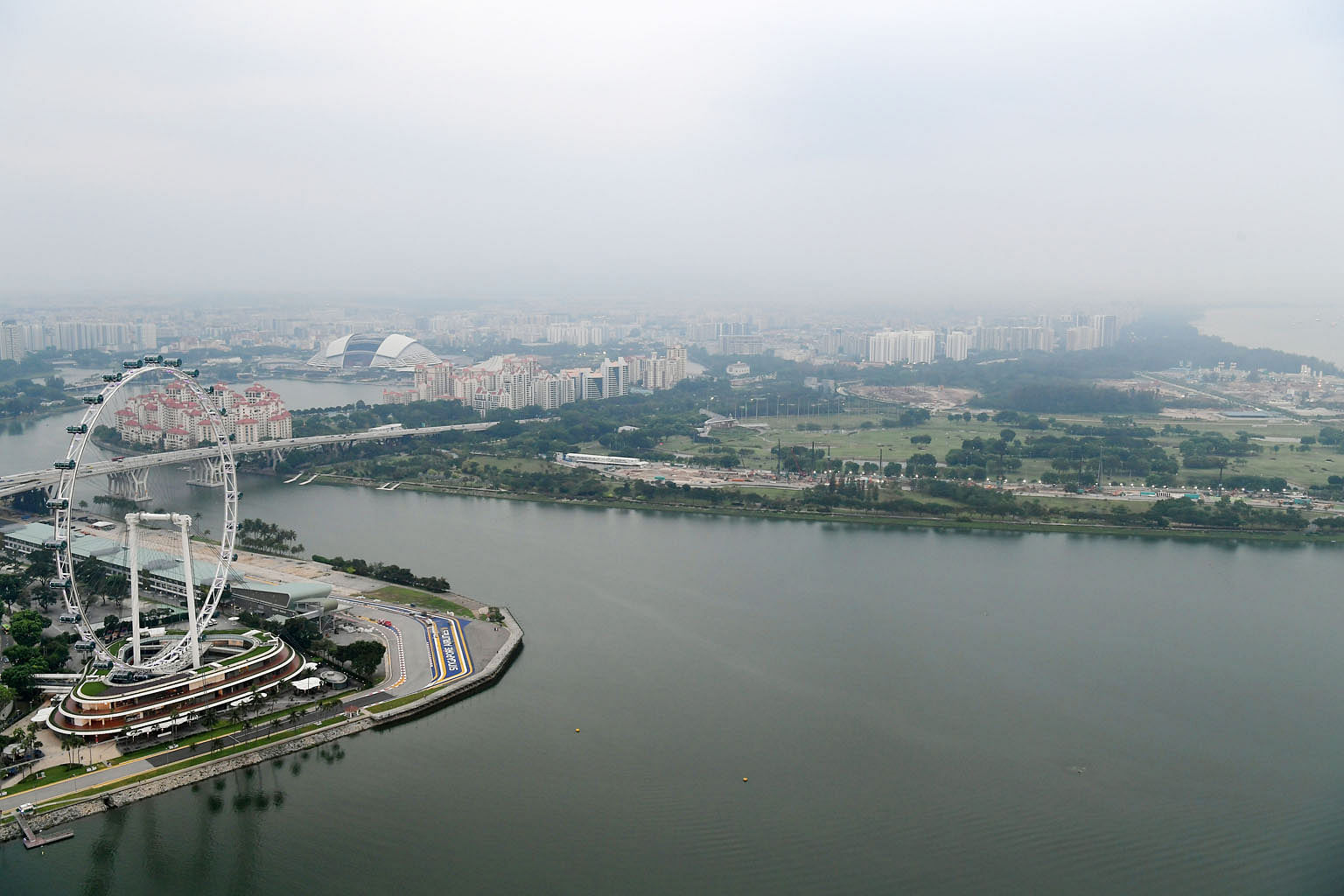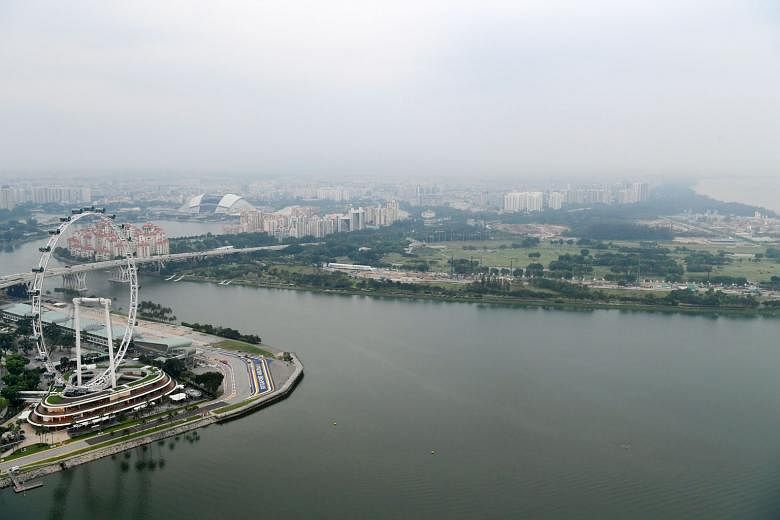Looking out of the window a fortnight ago, you could be forgiven for wondering if the seasonal haze had returned. Pollutant Standards Index (PSI) readings across the island exceeded the "Good" range for a full week. On Oct 25, PSI readings even reached 80 in the "Moderate" range, one of the highest readings for the year.
Rainy weather has now cleared the air. There is good and bad news in this.
The good news is that the haze was not, this time, caused by land and forest fires in the region. According to data from the National Environment Agency (NEA), there were relatively few hot spots in Indonesia's forests a fortnight ago, and none generated the intense and dense smoke haze of 2015.
INDONESIA DOES ITS PART
This is more than good fortune. Over the past two years, Indonesia has gone above and beyond to ensure that the massive fires of 2015 and past years do not happen again.
At the central government level, policies and institutions have responded. Since the end of last year, the government has put a freeze on new oil palm plantation licences. It has also banned the clearance of peat forests while Indonesia's Peatland Restoration Agency implements new regulations governing more tightly the management of these fire-prone landscapes.
Real changes are also taking place on the ground. South Sumatra and Central Kalimantan, where some of the worst burning took place in 2015, have rolled out ambitious plans to shift away from slash-and-burn agriculture and towards low-carbon economic development. As part of fire-preparedness programmes run by plantation companies and the government, entire villages are being trained and equipped to monitor and suppress fires.
To translate this momentum into long-term change, Indonesia's Financial Services Authority is also looking into policy reforms such as providing farmers with credit tied to sustainable practices. On Oct 20, the Singapore Institute of International Affairs conducted a workshop in Jakarta to highlight innovative projects financing farmers to conduct sustainable, fire-free agriculture.
The culmination of these efforts is that only 124,983ha of land have been burned this year, just 5 per cent of the 2.6 million hectares burned in 2015.
SINGAPORE LESS THAN BEST
The bad news comes when we ask what caused the haze two weeks ago. Evidence points to Singapore's own sources of pollution, namely "particle vapour and local emissions from cars and factories", as reported in The Straits Times on Oct 26. The cloudy and windless weather in the period caused these particles to accumulate, causing hazy conditions.

Even when weather is better, Singapore's median PM2.5 level - 17 micrograms per cubic metre (mcg/m3) - is far from ideal. While this falls within the "normal" range as defined by NEA's standards, it significantly exceeds the 10 mcg/m3 threshold that the World Health Organisation considers acceptable.
Hence, in tandem with Indonesia's efforts to curb haze, Singapore must address its own local sources of air pollution. How?
GOING SOLAR
No one is suggesting that Singapore give up the industries that continue to be a significant driver of its economy. However, in a post-Paris Agreement world, it is imperative for us to keep a close watch on latest technological developments that could help us minimise our carbon and emissions footprint.
A case in point is solar energy, which is rapidly becoming cheap and efficient enough to compete directly with fossil fuel. Only three years ago, Singapore was targeting a growth in solar capacity that constituted a tiny 5 per cent of its projected energy needs. But last week, Deputy Prime Minister Teo Chee Hean noted at the 10th Singapore International Energy Week that it may now be feasible to increase this target to as much as 25 per cent.
Reduced carbon emissions are often regarded as the chief benefit of switching to solar. However, we should not forget the positive impact this would also have on air quality. Though it is true that the natural gas burned by our power plants is less pollutive than coal, it nonetheless produces a significant amount of nitrogen oxides. In the atmosphere, these react to produce smog and particulates that not only reduce visibility, but also seriously damage our health.
It is only a matter of time before Singapore will need to fully decarbonise its energy mix. But to achieve this more ambitious target, we will need specialised storage facilities and management systems to channel stored solar energy during periods when it cannot be generated. We should begin making these infrastructural investments as soon as possible.
GREEN CARS
Another way to improve our domestic air will be by addressing policies for private vehicles. The recent announcement of a zero per cent growth rate for cars and motorcycles is a step in the right direction. However, this may also have the inadvertent effect of keeping older, more polluting models on the roads for longer.
To avoid this, we can take pointers from the Land Transport Authority's (LTA) Early Turnover Scheme, which provides subsidies to replace old diesel-powered goods vehicles and buses with newer, less polluting models. The scheme has proved successful in getting 27,000 vehicles switched to cleaner models since 2013. It is an opportune time to extend the scheme to include cars and motorcycles, which make up more than 80 per cent of the vehicles on our roads.
The scheme could also be expanded to encourage trade-ups to electric cars and hybrids. Not only do electric cars and hybrids generate less or no exhaust pollution, but they also produce only about half the carbon emissions of conventional vehicles.
However, Singapore is not a leader in the adoption of electric cars. In contrast with a leading country like Norway, where 37.5 per cent of new cars sold are electric cars, Singapore has a total of only 162 plug-in hybrids, electric cars and electric vans, constituting less than 0.02 per cent of our vehicles. Petrol-electric hybrids are more popular, but still comprise only 2 per cent of Singapore's 600,000 cars.
Singapore's sparse network of charging stations also presents a hurdle. Currently, we have only about 100 public and semi-public charging stations. In a promising move, the LTA recently announced Singapore's first large-scale electric car-sharing programme, which will install 500 charging stations islandwide beginning next month. However, it remains to be seen just how much this move will kick-start a shift in demand.
Indonesia's efforts have reaped the obvious benefit of clearer skies for Asean. But the lack of haze from Indonesia this year has also had an unexpected benefit. It has reminded us that Singapore needs to step up and stem the haze in our own backyard.
- Simon Tay is chairman and Pek Shibao is policy research analyst (sustainability) of the Singapore Institute of International Affairs.

